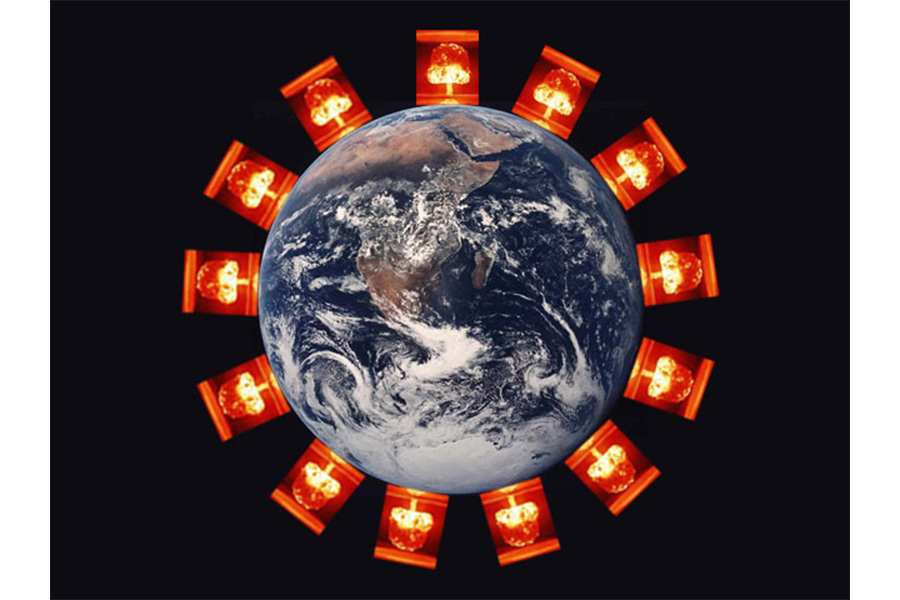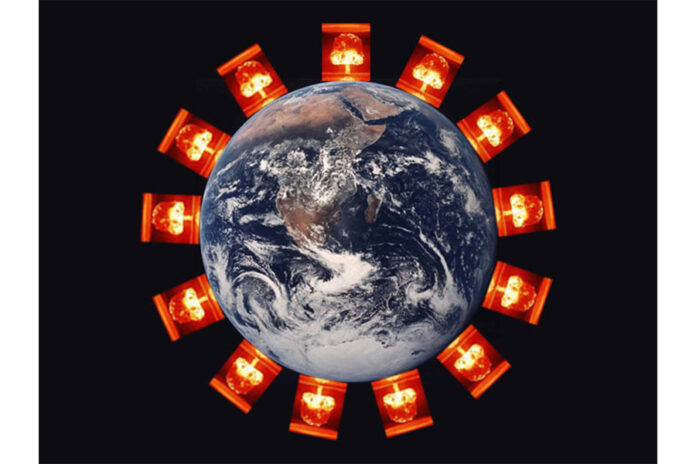
 Increasing nuclear tensions makes science fiction more relevant
Increasing nuclear tensions makes science fiction more relevant
If you’re like me, you’ve probably been thinking a lot about nuclear war. Nukes have existed and proliferated my whole life, but the possibility of a nuclear war always seemed far off — a worry that seemed as antiquated and irrelevant as the Soviet Union. I remember finding a Christian teen self-help book from the ‘80s at a thrift store a few years ago and laughing at the entry about the possibility of Soviets nuking us because of how dated I thought it was.
However, the U.N. Institute for Disarmament Research released a report in late April saying that the risk of nuclear detonation is as high today as it’s been since the height of the Cold War.
North Korea is moving full speed ahead with nuclear weapons testing with the intent of creating a missile capable of striking the U.S. mainland. Increasing tensions further, the Trump administration has taken a much harder line on North Korea. Tensions between Russia and the U.S., the two countries with the most warheads, are also at the highest they’ve been since the fall of the Soviet Union. If I read that thrift store book today, I wouldn’t laugh. It’s time to start taking the possibility of war seriously, and one of the ways to do this is through science fiction.
At the height of the Cold War, sci-fi was one of the main ways people processed nuclear war. The original Godzilla is a metaphor for the atomic bomb, alien invasions were metaphors for the threat of a Soviet invasion and annihilation, and in much of the written sci-fi of the time, nuclear war is a reality ever-present in the world the characters live in. The allegories and metaphors weren’t always intentional, but they reflected society’s fears about nuclear war, and the apocalyptic conditions it promised.
Nukes are present in modern sci-fi, but their full effects are never realized. A lot of the time, they’re deployed by the government in cases where they feel a city is already lost and where nuking the monster or the army is the only way to destroy the threat, like in the 2014 Godzilla remake or the first Avengers movie. The other way nukes are used is as a means for bad guys to terrorize the world. They go after nuclear launch codes so they can deploy them and scare the world into giving them what they want. This is what the villains do in X-Men: First Class and The Dark Knight Rises.
The nuke is usually stopped just in the nick of time and doesn’t go off at all, but when it does, it’s never in the middle of an important, populated area but rather some place where humanity can’t feel its full effects. It’s taken way out into the ocean like in The Dark Knight Rises or diverted through a wormhole and into an alien fleet off in space, like in the first Avengers movie.
While nukes themselves are shown in modern sci-fi, nuclear war isn’t. The best option in these movies is to go in and neutralize the bad guys without the use of nukes.
There are a few movies that deal seriously with large-scale destruction in modern times. Kaiju movies like Pacific Rim and the 2014 Godzilla call back to classic nuclear metaphors of the Cold War and the massive devastation monsters create. Alien invasion movies like Battle: Los Angeles and Independence Day 2 show what military operations in a nuclear-sized attack might look like and the dangers soldiers might go through trying to rescue citizens.
However, a recent sci-fi movie that arguably best represents what a nuclear attack would actually look like is 2006’s Cloverfield. The movie, presented as “lost” hand-held footage, follows a set of characters who go from partying to running for their lives in a matter of minutes. At first, none of them know what hit them, and only after hours on the run do they realize they are living through an alien invasion.
The fact that the film’s characters are average citizens adds to the realism of the movie. They never find out what’s truly going on, they don’t know how widespread the phenomenon is and they know nothing about what parts of town are safe or unsafe. They have no solid strategy and simply go from space to space trying to survive. And the audience is as much in the dark about the attack as they are.
The U.S. generally monitors nuclear test sites, so it’s possible citizens would have at least a little warning before the warhead hits, but even so, citizens would have a very short time to prepare, and it could turn anybody’s normal day into a fight for survival. Even an hour of forewarning probably wouldn’t save most average citizens who would have to fight their way through crowds to a safe place, and even then may not be guaranteed survival.
Though there are a few examples and representations of the devastation of nuclear war in modern sci-fi, it doesn’t seem widespread. Maybe it’s just the fact that we as a society aren’t ready to deal with the implications of nuclear war in the modern era, or the modern threat is too recent to have an impact on culture yet. If nuclear tensions continue to rise, I have to imagine we’ll be seeing a lot more sci-fi depicting that demise.
Written by: Noah Pflueger-Peters — napfluegerpeters@ucdavis.edu
Disclaimer: The views and opinions expressed by individual columnists belong to the columnists alone and do not necessarily indicate the views and opinions held by The California Aggie.




